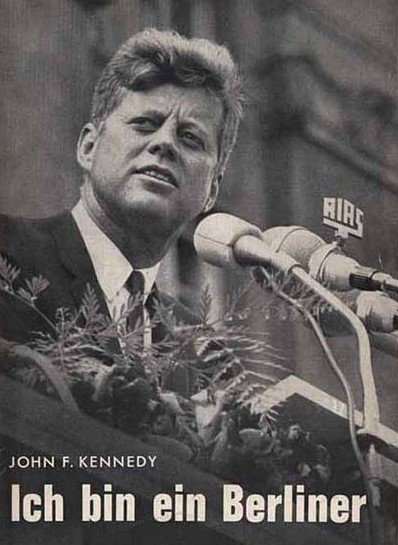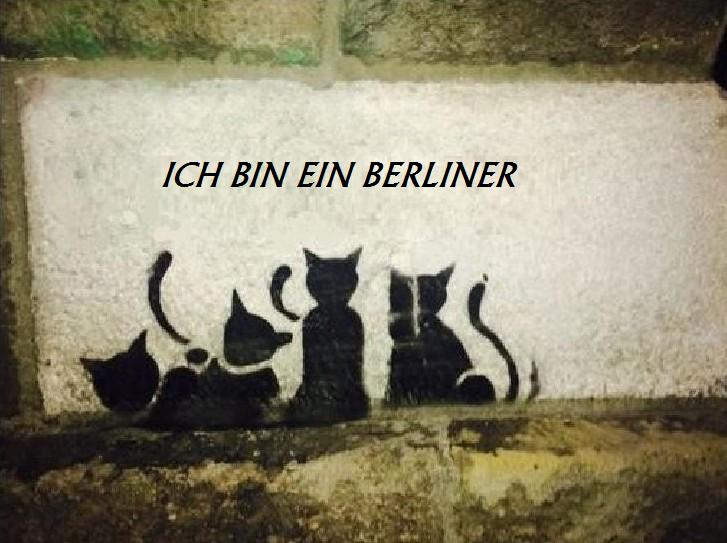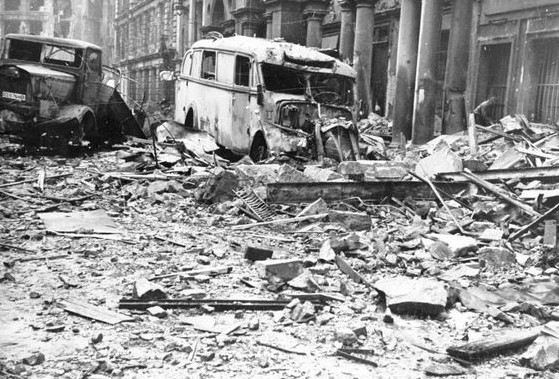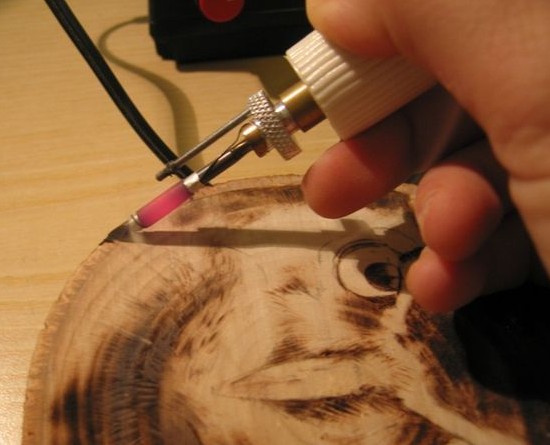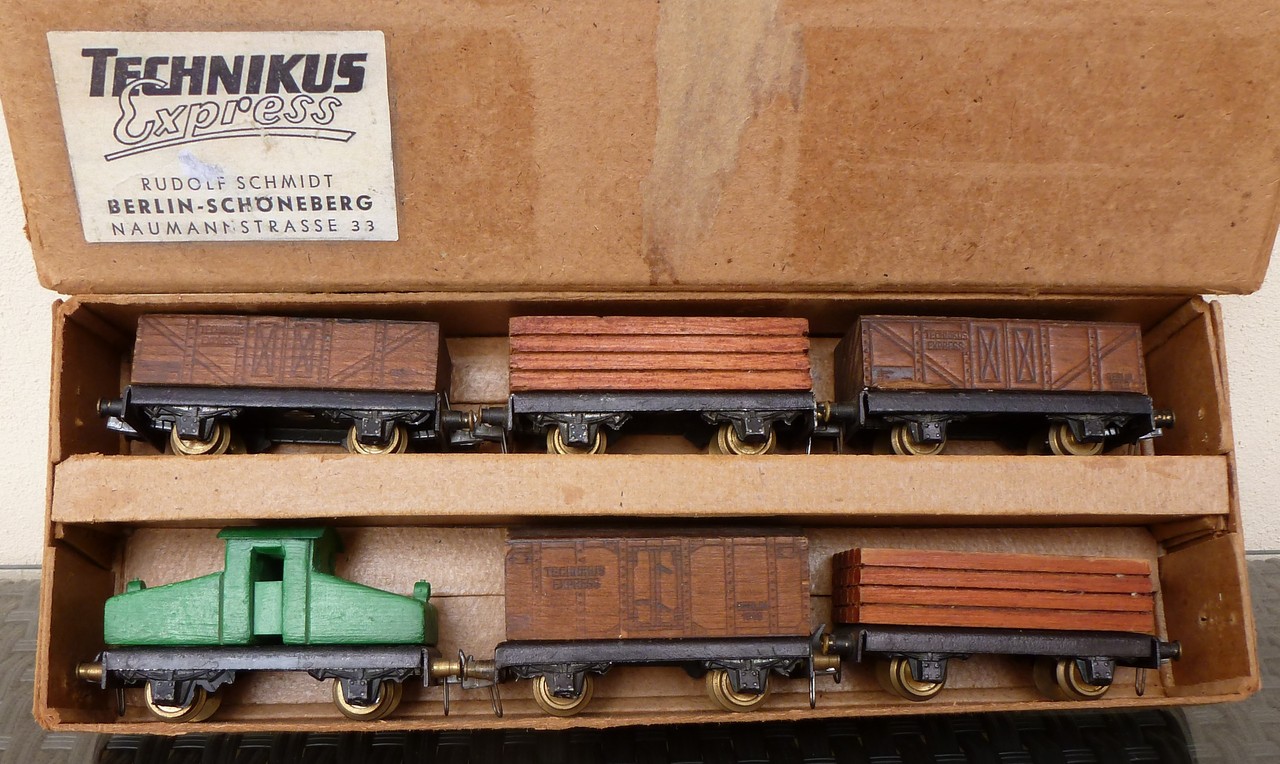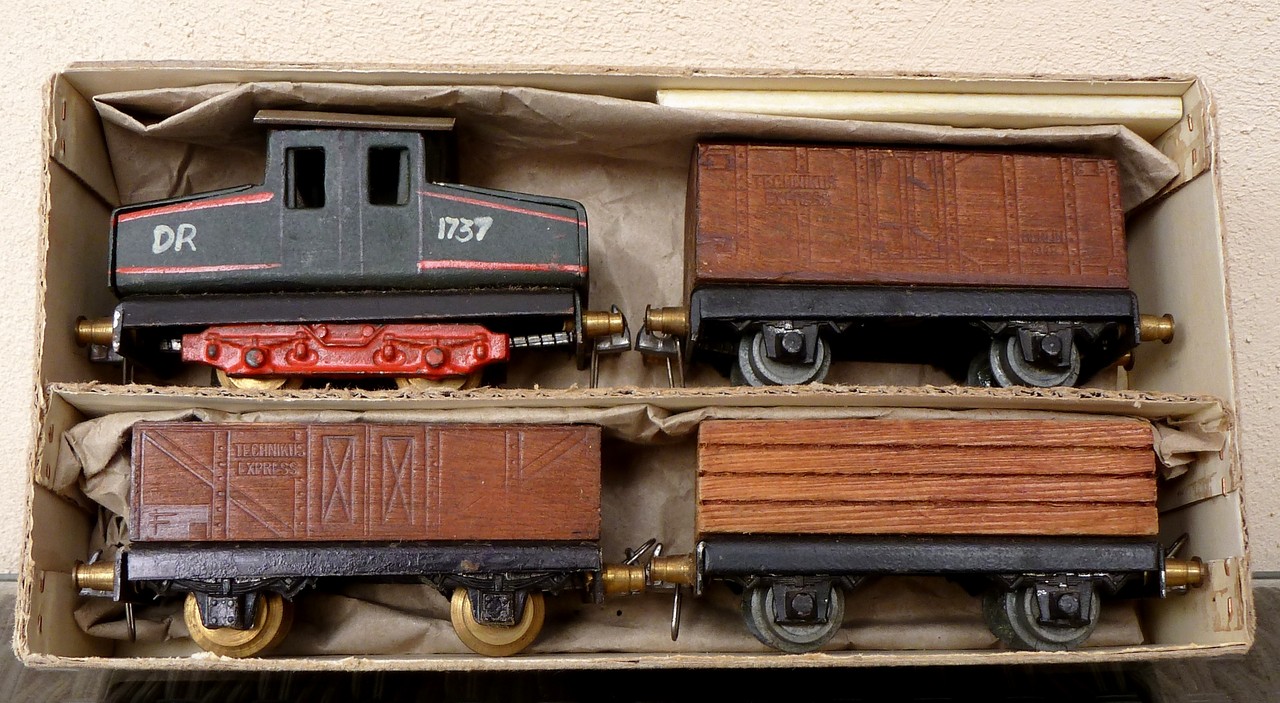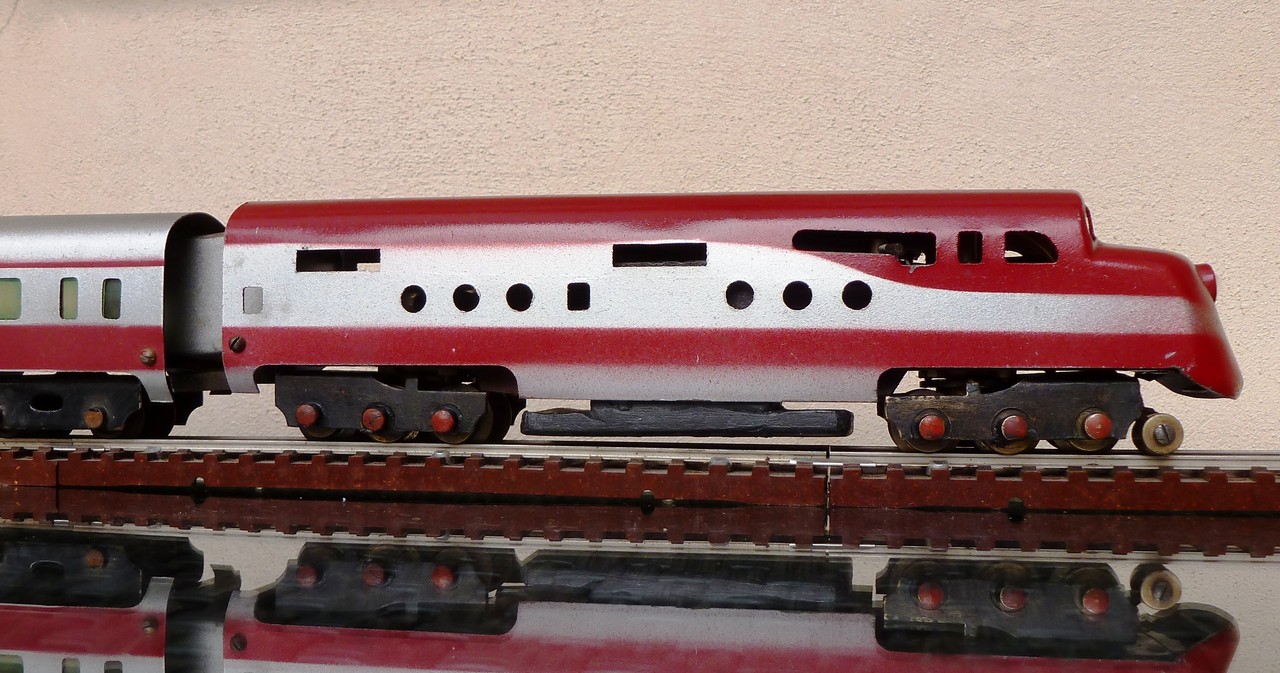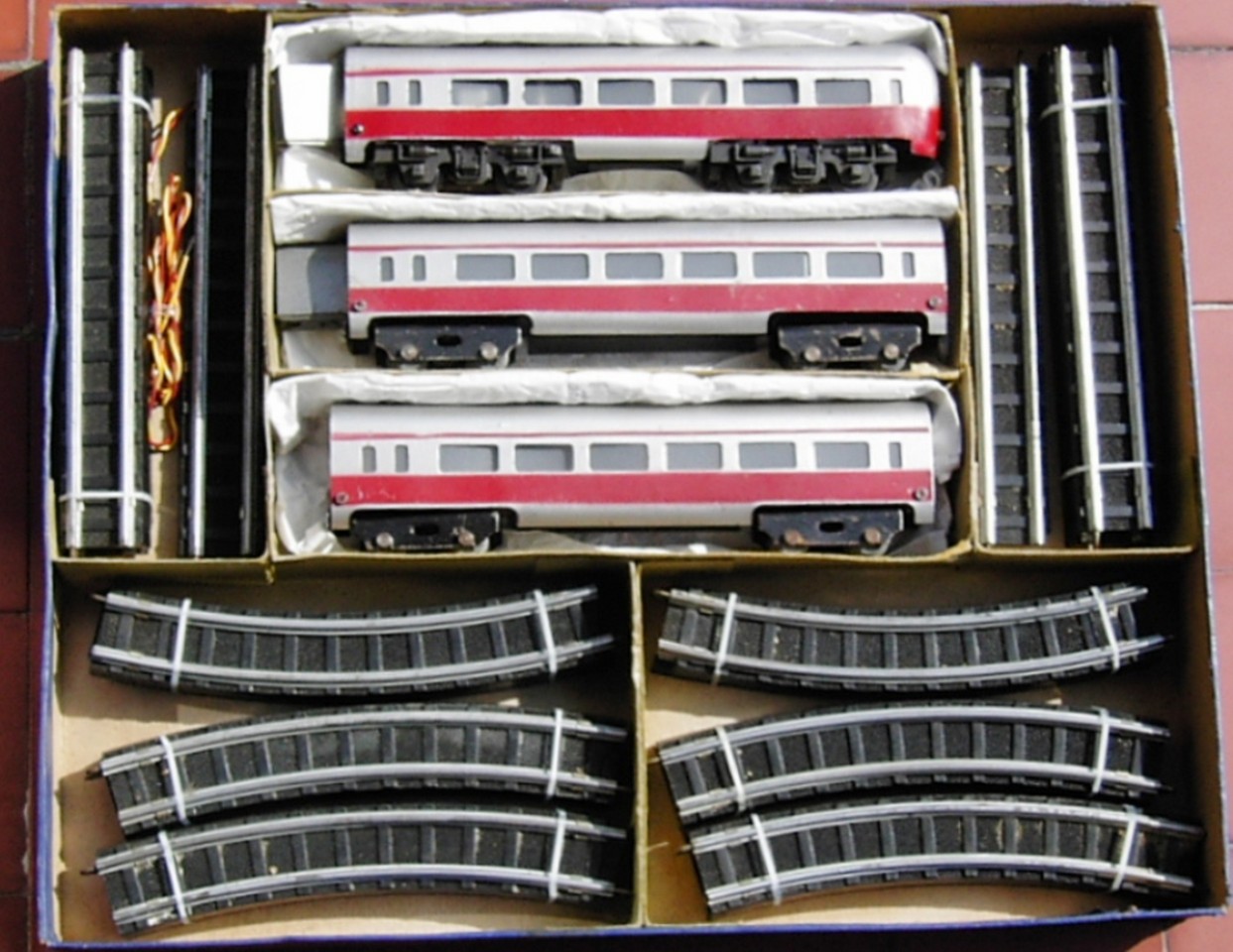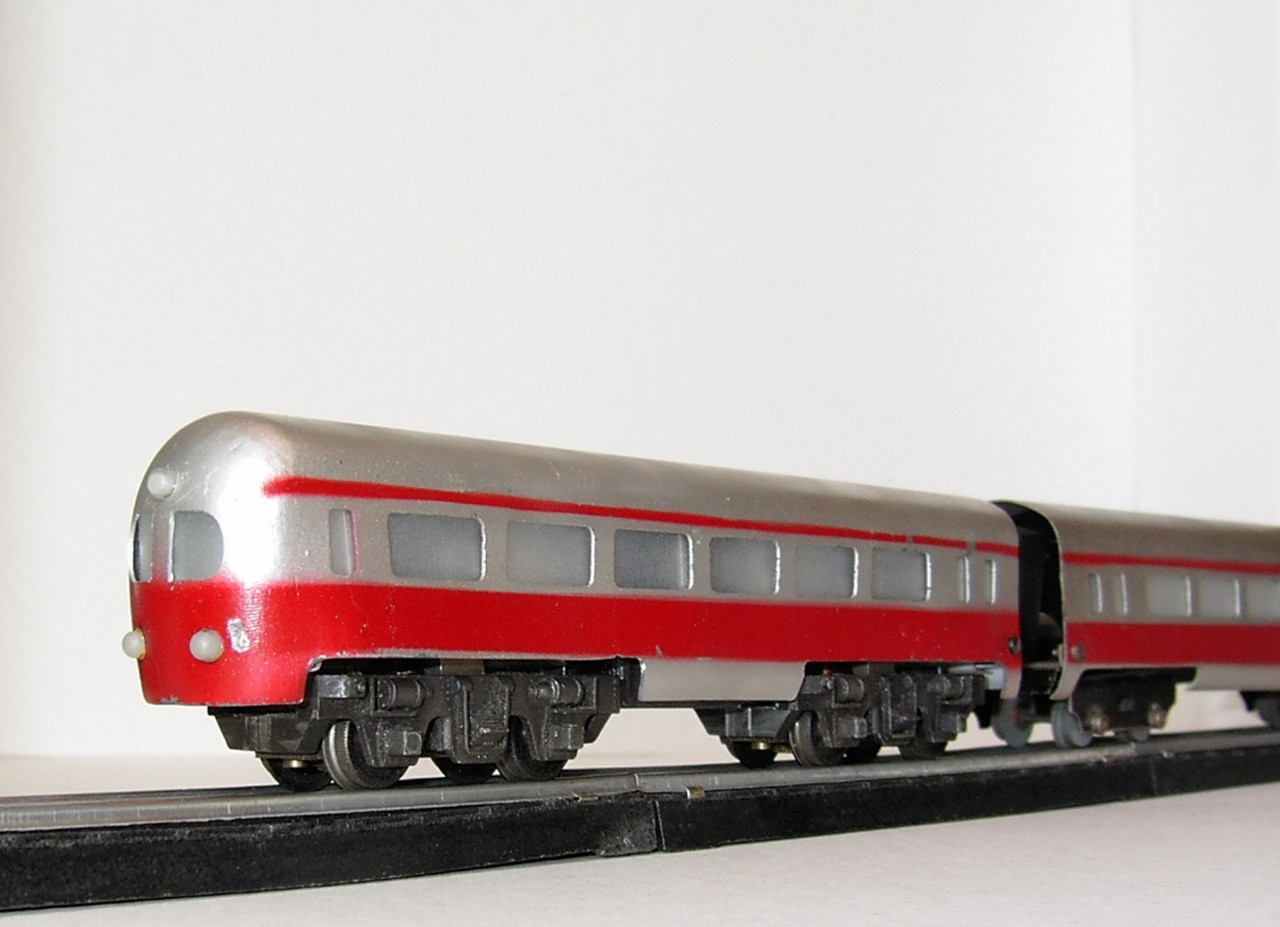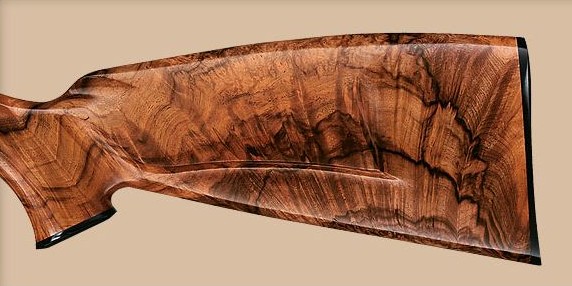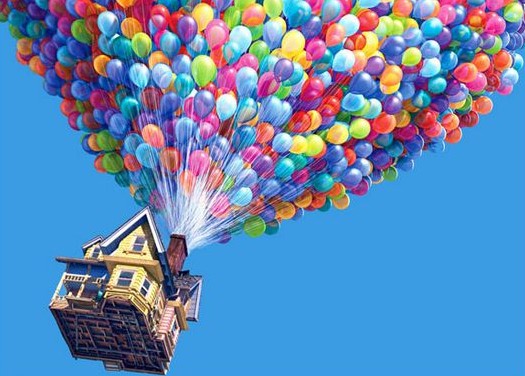“Ich bin ein Berliner”: Technikus Express
(Written by P.G.)
When on June 26th, 1963 John Fitzgerald Kennedy – during his speech in Rudolph Wilde Platz in front of the Rathaus Schöneberg – uttered the famous words in German that touched the entire Western world “Ich bin ein Berliner” (I am a Berliner) he probably didn’t know that the same sentence had been used eighteen years before, in 1945, to publicize the first train of the brand Technikus Express.
In fact, in the autumn of 1945, in that same district of Schöneberg, among the still smoking ruins of West Berlin destroyed by bombings,
Rudolf Schmidt founded, at number 33 of Naumannstrasse, a factory of scale OO toy trains called Technikus Express.
Herr Schmidt – somewhat like Herich Klein did in Vienna – managed to obtain a large quantity of gun stocks, semi-finished products, tin cans, scrap brass, a metal-shearing, a pyrography ….
All this obviously comes from the Wehrmacht.
With these limited resources, but animated by a great passion, he produced his first train.
The small green locomotive has no engine, the frames of all vehicles are sheared metal sheets, the leaf springs are in molten lead, wheels and bumpers are made of brass, the superstructure of the wagons are of hardwood worked with pyrography.
Almost all the wagons carry on the side walls the inscription “Technikus Express Berlin 1945 …’46, ’47 or ’48” hand-engraved with pyrography.
Note that the package is no more than a rifle cartridges cardboard box that has been adapted …
A similar locomotive exists in a metal version with hand-painted writings.
Note that, at the same time, a few hundred metres from the border that separates the city, the Hollbau company was producing a train similar, but with a motorized locomotive
that however has, for both the locomotive and the cars, paper superstructures !! …
In 1948 the magazine Modellbahn-Welt publishes the announcement of a new series of Technicus Express trains, which are this time powered with 24 V motors and running on tracks with two rails.
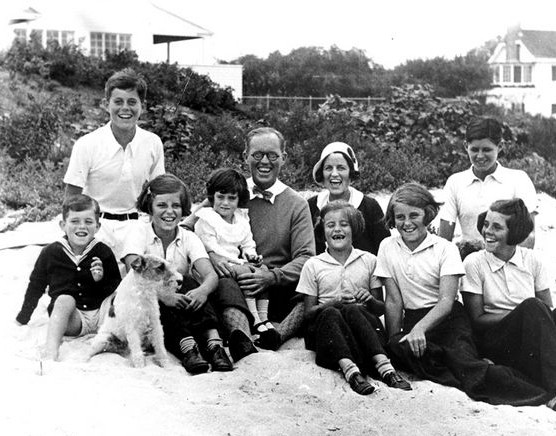
In the image you can see the Technikus Express family reunited.
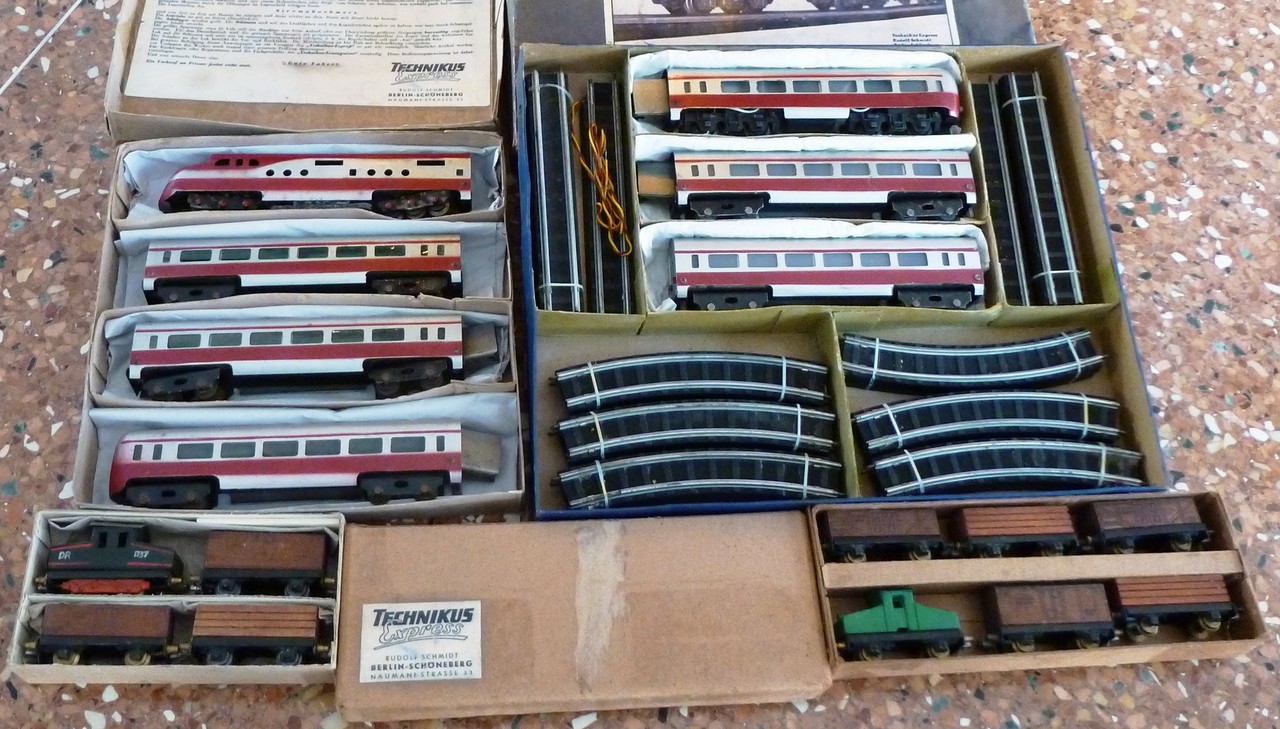
The first of the new trains is composed of a diesel locomotive, two American-inspired intermediate wagons and a tail wagon with a rounded end.
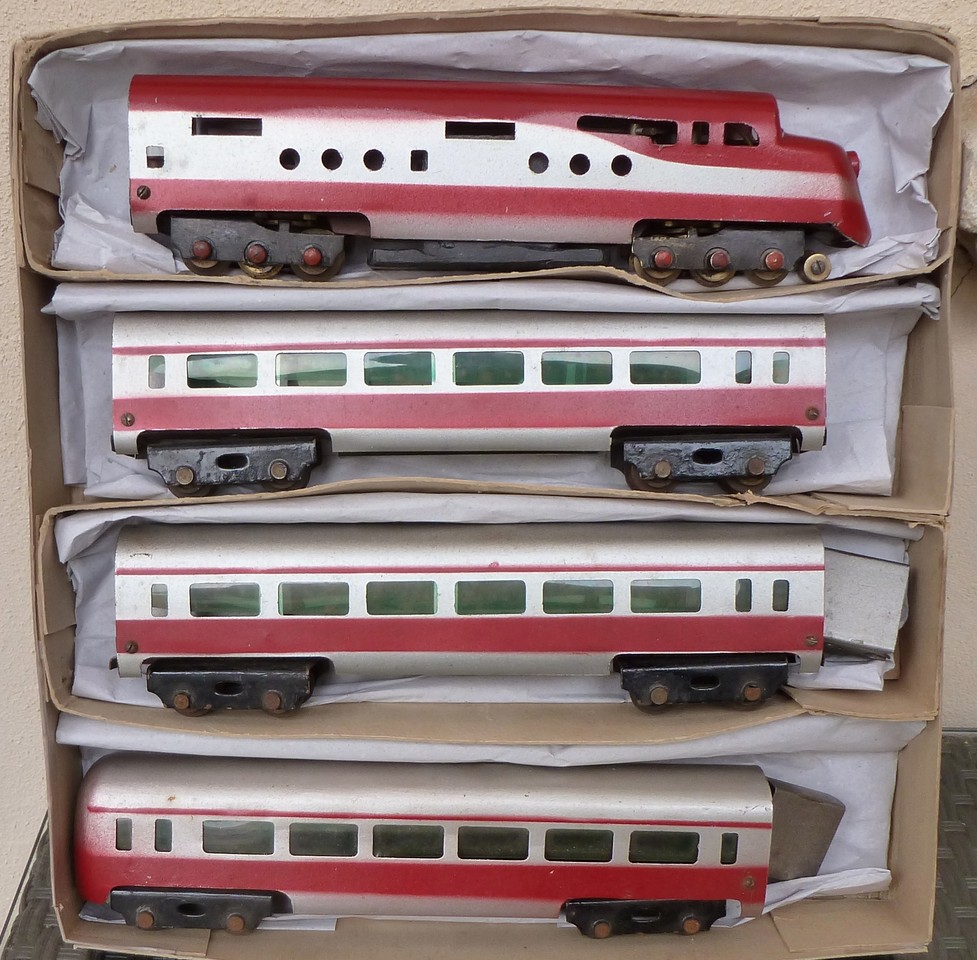
The locomotive, weighing 980 g, has a sturdy metal sheet frame fitted with lead stabilizing masses in the lower part,
two three-axle bogies with brass wheels and two motors which mesh thanks to endless screws positioned on the central axis of each undercarriage.
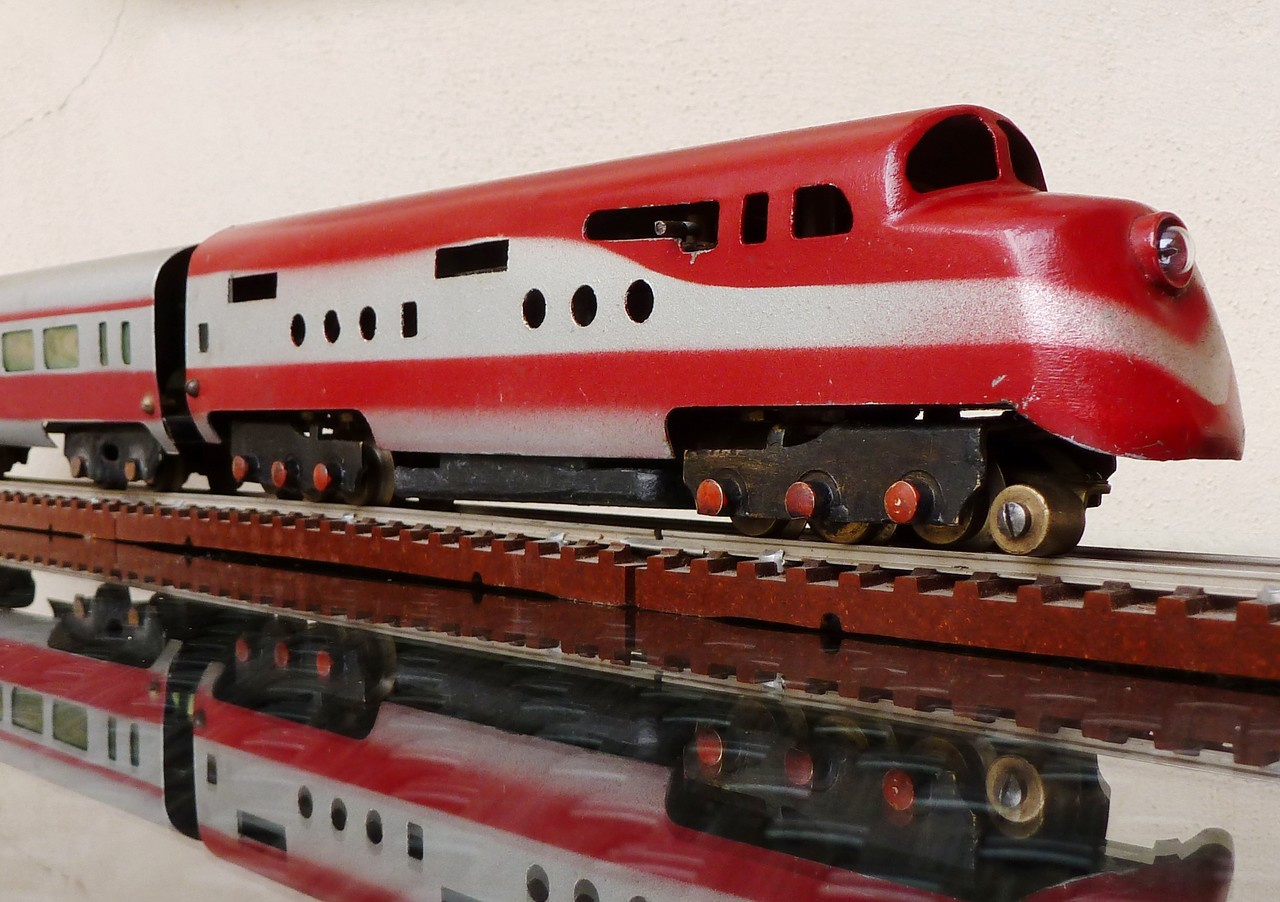
Power/Electricity runs from the rail on the left, through all uninsulated wheels, from the left through a rotating cylinder located in front of the front carriage.
The reversal is manual with the lever protruding from one of the windows of the right side.
The superstructures of the locomotive and the wagons are a cut and bent metal sheet, the windows are in celluloid, the coupling between the vehicles is through the bellows of intercommunication.
Before disappearing in the early ’50s, the brand produced a second articulated propelled train that uses many components of the earlier train.
This time, however, the two drive motors are housed in the head wagon with the rounded front and operate the two two-axle bogies of which this unit is equipped with.
The tracks have bent sheet metal rails and the bases are in bakelite.
And it is with this train that the history of this post-war miniature-railway pioneer ends, a pioneer who was capable of transforming
rifle butts into miniature wagons ….
Back to Home Page
(@April 14, 2015)
